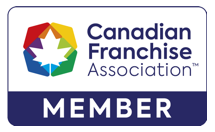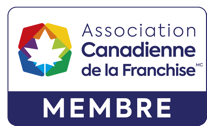Since the 1940s, the El Mocambo, a storied Toronto music venue that has hosted the likes of the Ramones, Blondie, that up-and-coming Irish band U2, and even the Rolling Stones, has managed to persist through the decades as a monument to the city of Toronto’s arts history. The El Mo very nearly joined the ranks of defunct legendary Toronto clubs like Larry’s Hideaway, the Bamboo, the Silver Dollar and The Edge, when it came up for sale in 2014. It received its metaphorical “stay of execution” in the form of a last-minute purchase by local Bay Street bad-boy visionary, Michael Wekerle, popularly known for his role as an investor on TV’s Dragons’ Den. Since then, Wekerle and his team have worked tirelessly to finance renovations to the tune of several million dollars and oversee the club’s resurrection, including expansion of the El Mocambo brand into previously untapped merchandising territory.
Trademark History
As ubiquitous as the El Mo is to College and Spadina, so too is the massive 40 foot neon-lit palm tree sign to the fabled club’s entrance. The El Mocambo palm enjoyed legal protection as a registered trademark from 1981 onward, until it was expunged in 1997 for failure to renew. Nearly two decades later, when the club’s new owner decided to protect the palm design through the trademark process once again, the application was opposed by Voyetra Turtle Beach, Inc., an American gaming peripherals company that also utilized a palm tree motif in its logos. Hence the Intellectual Property team at Mills & Mills LLP went to bat for the El Mo’s signature palm, headed by registered trademark agent and lawyer Taras Kulish. Please see below for two clips from Toronto news broadcasts where Taras discusses the dispute. These clips were also presented to the Trademark Opposition Board as evidence; more on that below.
So, how did the Trademark Opposition Board see it? The iconic palm and its sister design mark (the “World Famous El Mocambo” text with multiple palms) were both granted trademark protection in all categories of goods and services applied for, save one. Please find the full text for the decisions below:
Voyetra Turtle Beach Inc. and Elmorealty Inc. (1715830)
Decision Voyetra Turtle Beach Inc. and Elmorealty INc. (1715834)
The Opposition
The opponent raised three grounds of opposition pursuant to the Trademarks Act, RSC 1985, c T-13, as it read prior to June 17, 2019: registrability of a mark that is confusing with a registered trademark; registrability of a mark that is confusing with a trademark that had previously been known in Canada or for which an application had been filed; and intention to use the mark in the categories applied for.
Intention to use the marks – Sections 30(e) and (I)
Sections 30(e) and (i) required that the applicant must demonstrate intent to use the mark in Canada in association with specific goods and services. Trademark Opposition Board Member Timothy Stevenson noted that there was sufficient affidavit evidence showing the El Mocambo’s owner intended to use the marks for a wide variety of goods, including apparel, musical instruments, music gear and accessories, and alcoholic beverages. Mr. Stevenson took issue however with “computer games”, concluding that this category was only included to prevent limiting the scope of rights obtained – a proposition the El Mocambo’s owner disagrees with.
The “confusion test” – Sections 12(1)(d) and 16(3)(a) and (b)
Section 12(1)(d) states that a mark is registrable if it is not confusing with a registered trademark; sections 16(3)(a) and (b) very similarly provided that a mark must not be confusing with a trademark that had previously been know or applied for. These challenges both turned on the “confusion test” wherein Mr. Stevenson considered the likelihood of mistaking the El Mocambo’s marks for the opponent’s already registered trademarks. The confusion test is defined in section 6(2) of the Trademarks Act as follows:
“The use of a trademark causes confusion with another trademark if the use of both trademarks in the same area would be likely to lead to the inference that the goods or services associated with those trademarks are manufactured, sold, leased, hired or performed by the same person, whether or not the goods or services are of the same general class or appear in the same class of the Nice Classification.”
As guidance, Mr. Stevenson cited Masterpiece Inc v Alavida Lifestyles Inc, (2011 SCC 27) at paragraph 49, wherein Justice Rothstein clarified the effect of section 6(5)(e):
“… the degree of resemblance, although the last factor listed in s. 6(5), is the statutory factor that is often likely to have the greatest effect on the confusion analysis.”
Mr. Stevenson also referenced Veuve Clicquot Ponsardin v Boutiques Cliquot Lige (2006 SCC 23) at paragraph 20 where Justice Binnie articulated that:
“[t]he test to be applied is a matter of first impression in the mind of a casual consumer somewhat in a hurry who sees the name… and does not pause to give the matter any detailed consideration or scrutiny, nor to examine closely the similarities and differences between the marks.”
The test should be based on the first impression of a viewer who does not have time to compare the differences between the opposed marks. For your reference, we have included the images at issue below. To the left are the two marks belonging to Turtle Beach; to the right are the two marks belonging to the El Mocambo.

Mr. Stevenson found the El Mocambo’s palm logos to be distinct and different from the opponent’s marks. In his reasons, Mr. Stevenson commented on the uniquely recognizable quality of the El Mocambo’s marks:
“… while the Opponent’s trademark may be known to a slightly greater degree, the Applicant’s trademark has a higher degree of inherent distinctiveness.”
Mr. Stevenson pointed to the “EL MOCAMBO” text within the palm tree and the level of detail in the drawing itself as unique to the El Mocambo’s one-palm mark. He made similar observations regarding the multiple palm mark. For both marks, the Member concluded that the El Mocambo:
“has satisfied its legal burden to show that there is no reasonable likelihood of confusion between the parties’ trademarks.”
On this basis, the Opposition Board Member rejected the challenges pursuant to sections 12 and 16.
The Application Succeeds
Ultimately, the Member settled the matter with the following decree:
“Pursuant to the authority delegated to me under section 63(3) of the Act, I refuse the application with respect to the goods “computer games” and I reject the opposition with respect to the remainder of the goods and services pursuant to section 38(12) of the Act.”
This decision represents an important marker in securing the El Mocambo’s future revenue streams. Looking back at the history of these proceedings, Kulish says, “Even though the Opponent fought tooth and nail all the way, we knew that the decision would come down to the issue of confusion – that is, there simply was no basis for confusion. The ultimate proof, which we presented to the Opposition Board, were average people interviewed on Spadina Avenue who told a CBC reporter that while both designs were palm trees, ‘one was not like the other’.”
Furthermore, this decision also represents a significant step toward securing Toronto’s arts and culture history. When this writer had the privilege many years ago of performing with my heavy metal band on that intimate, brick-flanked stage “under the neon palms”, I knew it was a night just like thousands that had come before it, but couldn’t shake a pervasive sense of wistfulness. How long would this club and others like it last before they only exist in archives and recollections? In some small part, legal processes like this successful trademark application contribute to protecting Toronto’s very identity. The El Mocambo’s iconic palms persist and survive to bathe another starry-eyed concertgoer in their neon glow.
The appeal period ended on September 30 with no further challenge from Turtle Beach.
Taras Kulish, Senior Trademark Lawyer at Mills & Mills LLP
Cynthia Zhang, 2021 Summer Student at Mills & Mills LLP.

 2 St Clair Ave West
2 St Clair Ave West


